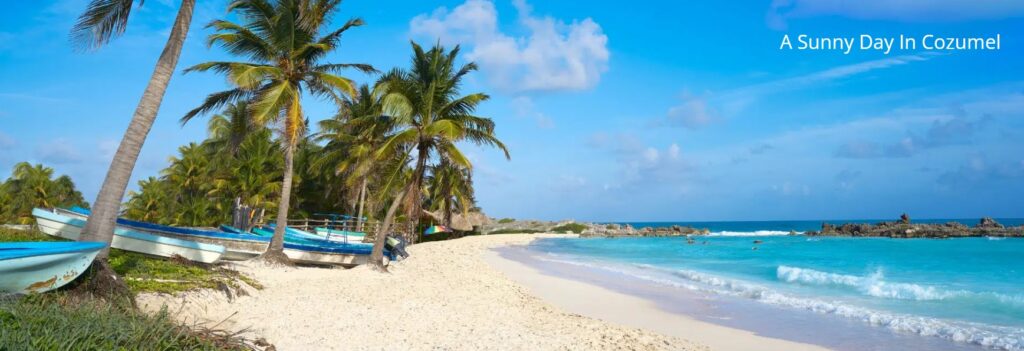
Our ship stopped at Cozumel in Mexico, but due to the proximity to the UNESCO listed Chichen Itza, we decided to skip Cozumel almost entirely. This may have been a bit of a shame as by all accounts, Cozumel is a beautiful place to kick back and hang.
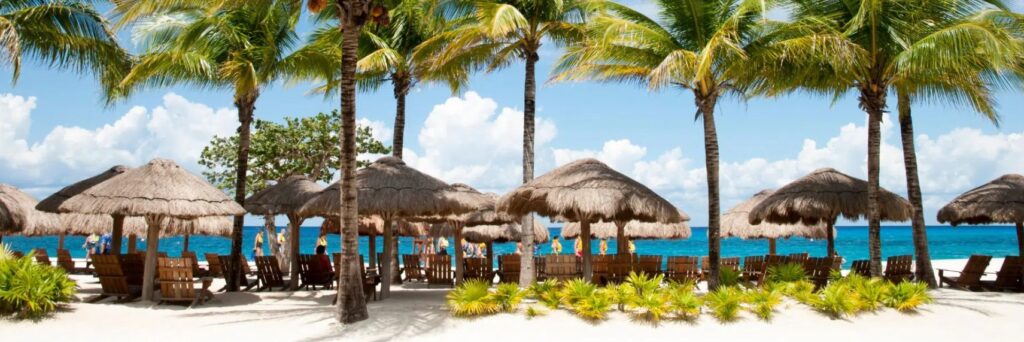
More accurately, Isla Cozumel is Mexico’s 3rd largest island and is with countless activities both below and above the waves. It is about 30 miles long and 9 miles wide. The name in Mayan translates to “Island of the Swallows” due to the birdlife. The place has been a long time dive Mecca and has white sand beaches, coral reefs, modern amenities and lots of wild areas.
But given that this was not our goal, we had a 7 am start that saw us hopping on a very bumpy 45-minute ferry ride.
The ferry took us from Cozumel over to the mainland Mexican town of Playa del Carmen.
This is a coastal resort town, along the Yucatán Peninsula.
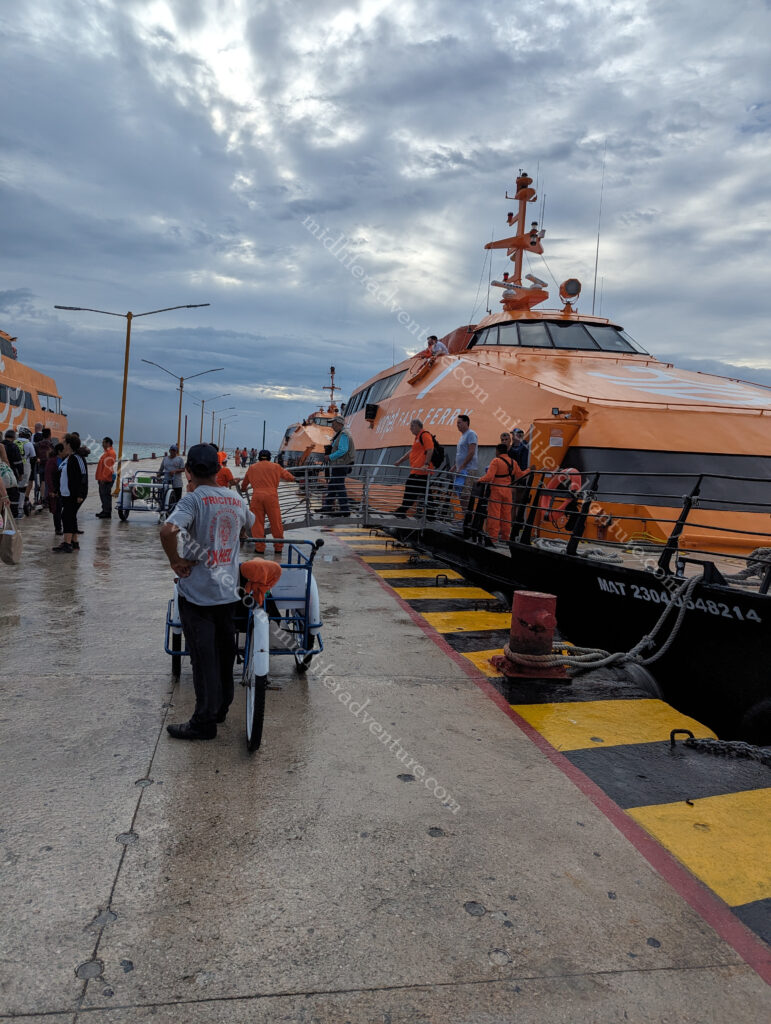

Playa del Carmen is known for its palm-lined beaches and coral reefs. The Quinta Avenida pedestrian thoroughfare runs parallel to the beach, with shops, restaurants and nightspots ranging from bars to dance clubs.
But this wasn’t our goal either, so from here we hopped a bus (well more of a mini-van) for a 2 hour drive through the Mexican countryside. And sure enough, we arrived at our intended destination, Chichen Itza. Chichen Itza is one of the 7 wonders of the world and is a former Mayan city dating back to as early as 250AD. At its peak around 35,000 people would have called it home. It was one of the most important Mayan cities in Latin America.
Chi means “mouths” and chen means “wells” and Itzá is the name of the Maya tribe that settled there. Chichen Itza means “At the mouth of the well of the Itza.” Chichén Itzá is the Spanish spelling and Chichʼen Itzaʼ is the Mayan spelling.
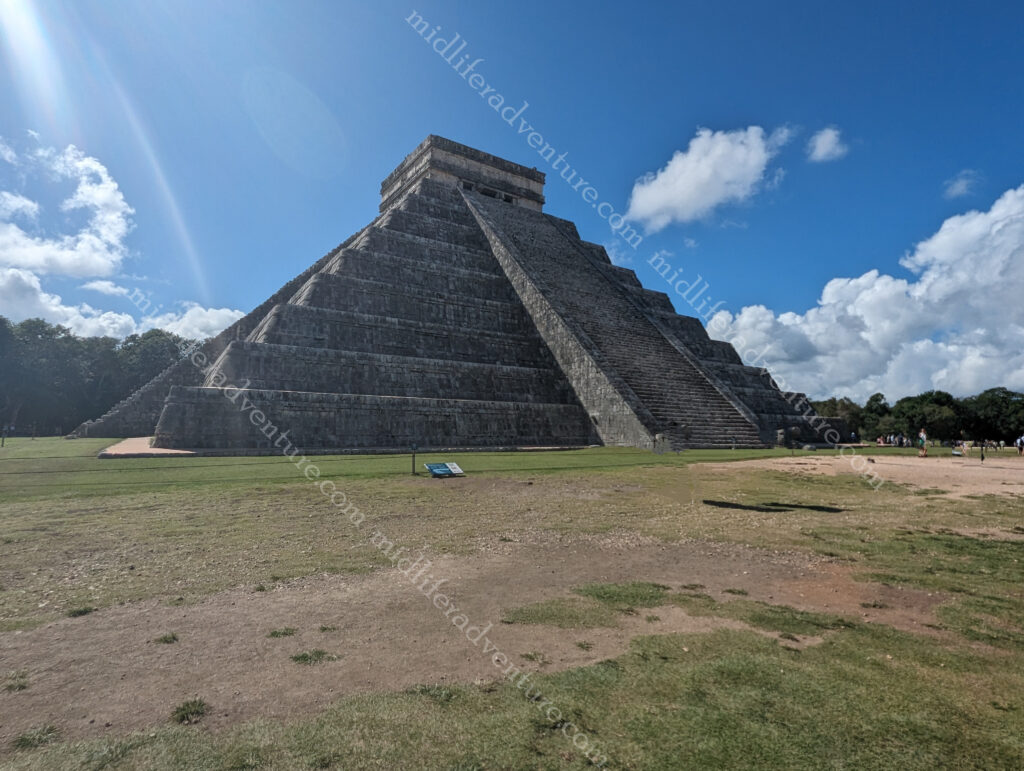
Possibly the most notable thing about the city is the ancient temple Pyramid of El Castillo (Kukulcan Temple). It is the most famous and recognisable of Mexico’s monuments but it was not built by the Mayans but rather in the 10th century by foreign invaders.
The Pyramid of El Castillo rises 24 metres above the Main Plaza area. Each of its four sides has 91 stairs that face north, east, south, and west. Including the step on the top platform, there is a total of 365 steps. This is the same number of days in the solar year.
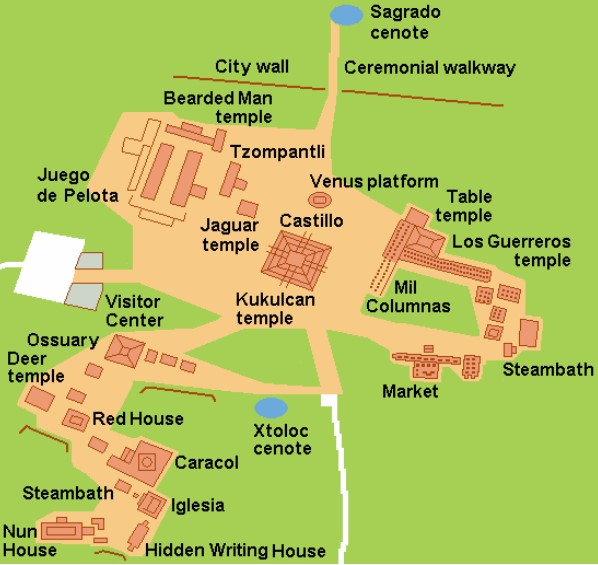
Beyond the pyramid at the centre, the site contains the remains of the entire city. The site of Chichen Itza occupies an area of around 10 sq/km. And everywhere you go there is more to see. Carved walls pyramids, buildings, sports courts, virtually everything you would expect to find in a major (ancient) city.



















The earliest structures built include the Akabtzib (“House of the Dark Writing”), the Chichanchob (“Red House”), the Iglesia (“Church”), the Casa de las Monjas (“Nunnery”), and the observatory El Caracol (“The Snail”).
On the site are caves and sinkholes in limestone formations, known as cenotes. These are natural wells that form when limestone surfaces collapse and expose water underneath.
Tlachtli was a Mayan game that involved keeping a grapefruit-sized rubber ball in the air with the use of thighs, hips, and chest.
It was known by various other names including pok-a-tok, pitz, tlacho, and ulama. In some variations, the goal became knocking the ball through hoop-like stone rings.
And the losers were often sacrificed to the gods.
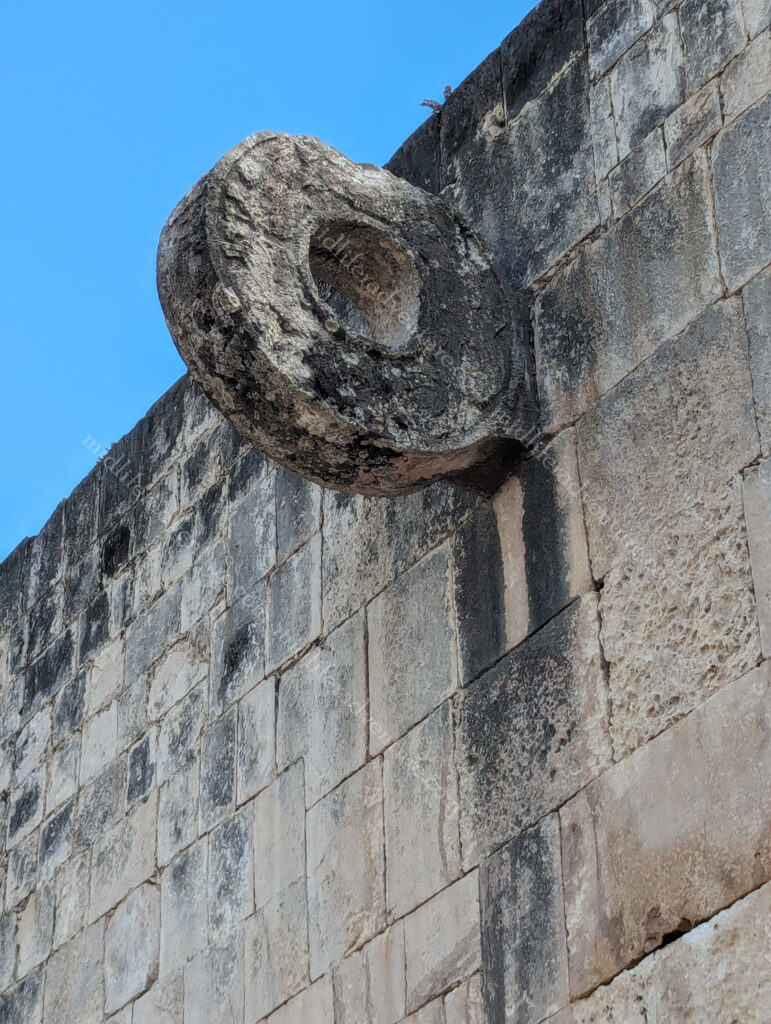
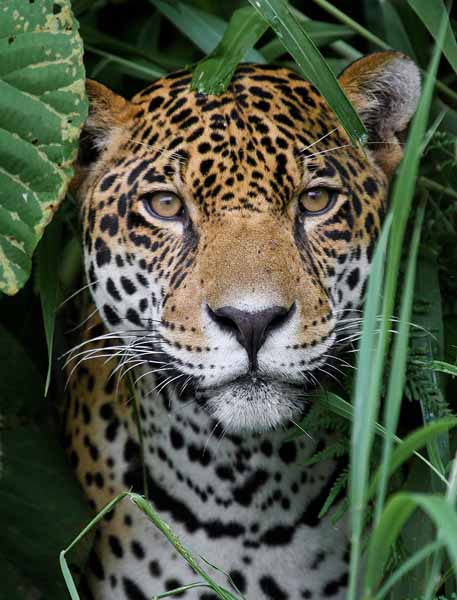
The most revered beast in the Mayan world was the jaguar.
It was thought that at night the sun slipped into the underworld and would transform into a jaguar.
The animal was linked with warriors and hunters, and became a symbol of the might and authority of the rulers.
The kings and rulers desired the power and spirit of the jaguar.
During the spring and autumn equinoxes (around March 20/21 and September 20/21), the light hits the earth on the equator. When this happens, the shadows cast by the setting sun give the appearance of Quetzalcóatl (a feathered serpent) slithering down the steps.

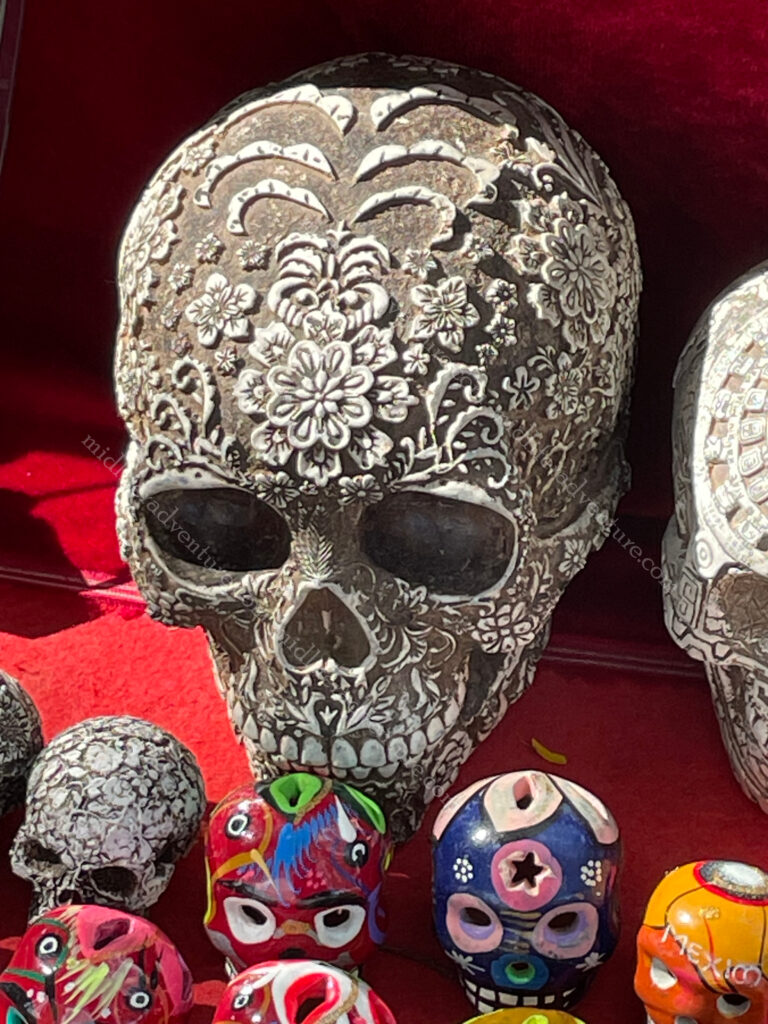
The Day of the Dead (Dia de los Muertos) is a Mayan Tradition going back to 1800BC that celebrates life with food, dances, and skull masks.
It is believed that the souls of the spirit realm can visit the land of the living, not to haunt people, but to lovingly reconnect with their family and friends.
Chichen Itza was good and we were both glad that we made it here. But it was impossible not to compare this experience with other major places that we have seen around the world, most notably Siem Reap in the Khmer Empire. The two experiences were remarkably similar but the concept of comparison sits poorly with me.






Having looked around the site we had some time to look at some of the trinkets that were available for purchase. I must admit that I actually enjoyed them and would have liked to have got some. There was an amazing carved Mayan Calendar that I loved but the weight and bulk just did not lend itself to ongoing travel.







As we traveled around we were dodging a weather front virtually the whole time. As we arrive the weather clears (to give us a nice experience) before closing back in again. It got so bad that the day after our trip to Coco Cay other boats could not dock and the day after Cozumel, the seas were so rough that the ferries could not run.